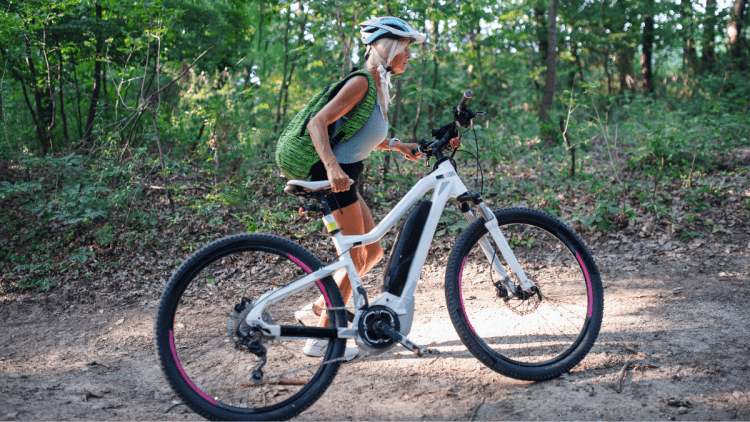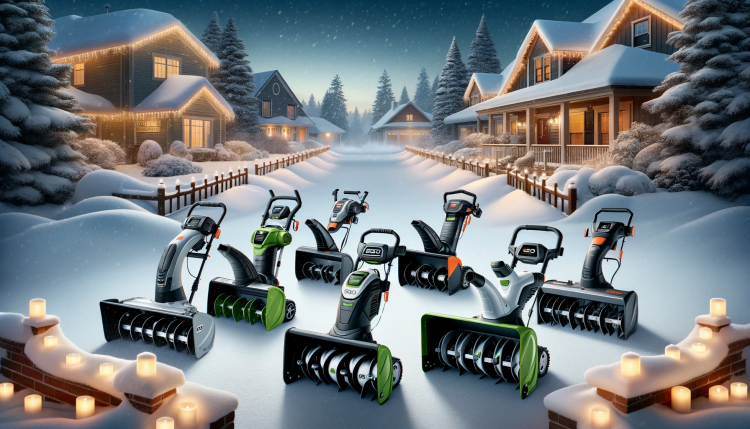
250W Electric Motors vs 500W Electric Motors – #1 Best of Guides
By Zach Houston (revised 10/17/2023)
Welcome to the ultimate guide comparing 250W and 500W electric motors in electric scooters, bikes, and skateboards. Whether you’re a casual commuter looking for an energy-efficient way to get around town or an adventure enthusiast seeking more power for varied terrains, understanding the differences between these two types of motors is crucial.
This comprehensive guide aims to offer you an in-depth analysis of 250W and 500W electric motors, from their performance metrics to legal considerations. We will cover key aspects like speed, range, and terrain capabilities, helping you make an informed decision tailored to your specific needs.
What makes this guide stand out is our focus on providing you with first-hand evidence, original research, and expert insights, cutting through the noise to deliver what truly matters. By the end of this article, you’ll be well-equipped to choose between a 250W and 500W electric motor, understanding not just the technical specifications, but also how those numbers translate to real-world applications.
So, let’s dive right in and help you make the best choice for your electric mobility needs.
Understanding 250W Electric Motors vs 500W Electric Motors
250W Electric Motors vs 500W Electric Motors
When choosing an electric scooter, bike, or skateboard, one of the most crucial factors to consider is the power rating of the electric motor. This figure, usually expressed in watts (W), determines a range of performance attributes, from speed and acceleration to the ability to climb hills. This article will delve into the differences between 250W and 500W motors, helping you make an informed decision.
What Does the ‘Watt’ Rating Mean?
250W Electric Motors vs 500W Electric Motors
The watt rating represents the motor’s electrical power output. In simple terms, a higher wattage rating generally means a more powerful motor. It’s essential to understand that while wattage is an indicator of potential speed and acceleration, it is not the only factor.
250W Motors: The Pros and Cons
250W Electric Motors vs 500W Electric Motors

Pros 250W Motor:
- Energy Efficient: 250W motors generally consume less energy, translating to longer battery life.
- Lightweight: These motors are usually lighter, making the overall vehicle easier to handle.
- Cost-Effective: Lower-wattage motors are often more affordable upfront.
Cons 250W Motor:
- Limited Speed and Acceleration: 250W motors may struggle to offer fast speeds and quick acceleration.
- Poor Hill Climbing: These motors might find it challenging to climb steep slopes.
Performance Metrics and Insights
- Top Speed: Typically 15-20 mph
- Range: Approximately 10-20 miles, depending on various factors like terrain and rider weight.

500W Motors: The Pros and Cons
250W Electric Motors vs 500W Electric Motors
Pros 500W Motor:
- Higher Speeds: Generally, you can expect higher top speeds from 500W motors.
- Better Acceleration: Quicker off the line, making it easier to navigate through traffic.
- Hill Climbing: These motors are capable of tackling steeper inclines.
Cons 500W Motor:
- Reduced Battery Life: Higher power output can drain the battery faster.
- Weight: Tend to be heavier, which could be a concern for portability.
Performance Metrics and Insights
- Top Speed: Usually around 20-28 mph
- Range: Generally 10-15 miles, again contingent on various factors.
Decision-Making Factors: 250W Electric Motors vs 500W Electric Motors
250W Electric Motors vs 500W Electric Motors
- Terrain Type
- 250W: Ideal for flat terrains and smoother surfaces.
- 500W: Better suited for hilly or variable terrains.
- Commute Distance
- 250W: More efficient for shorter commutes.
- 500W: Capable of longer distances due to higher power.
- Speed Requirements
- 250W: Generally offers slower speeds; adequate for leisurely rides.
- 500W: Provides faster speeds; useful for quicker commutes.
- Battery Life
- 250W: Typically longer battery life due to lower power consumption.
- 500W: May have shorter battery life due to higher energy output.
- Legal Constraints
- 250W: Often fewer legal restrictions; generally classified as bicycles.
- 500W: May require registration, insurance, or even a license depending on jurisdiction.
- Cost
- 250W: Usually more affordable upfront.
- 500W: Higher initial cost, but offers more power and speed.
- Portability
- 250W: Generally lighter and easier to carry.
- 500W: Heavier due to the more robust motor and potentially larger battery.
- Use Case
- 250W: Suitable for casual riding and lighter commutes.
- 500W: Ideal for more demanding tasks like cargo hauling or steep inclines.
- Maintenance
- 250W: Usually less wear and tear, leading to potentially lower maintenance costs.
- 500W: More robust performance may result in higher maintenance needs over time.
- By considering these factors, you can make an informed decision that aligns with your specific needs, whether you’re looking for efficiency and simplicity with a 250W motor or more power and capability with a 500W motor.
More on Electric Motors: 4 Most Powerful eBike Motor Types Explained.

Factors Influencing Speed – 250W Electric Motors vs 500W Electric Motors
250W Electric Motors vs 500W Electric Motors
While power ratings provide a general indication of speed capabilities, it’s important to recognize that other factors also influence the actual mph achieved by electric vehicles. These factors include:
a) Terrain: Riding on flat surfaces allows electric vehicles to achieve their maximum speeds more easily. Uphill climbs and rough terrain may result in reduced speeds.
b) Rider Weight: The weight of the rider plays a role in the performance of electric vehicles. Heavier riders may experience slightly slower speeds compared to lighter riders.
c) Battery Capacity: The capacity and condition of the battery significantly impact speed and range. A fully charged battery will provide better performance than a partially depleted one.
d) Riding Style: The rider’s skill level, acceleration patterns, and use of pedal-assist (in the case of electric bikes) can affect the overall speed.
Legal Considerations: 250W Electric Motors vs 500W Electric Motors in Electric Scooters, Bikes, and Skateboards
When selecting a motor for your electric scooter, bike, or skateboard, it’s not just the performance that matters. The legal framework around the power rating of your motor is equally important and varies from one jurisdiction to another. Regulations can cover various aspects, from maximum speed to the types of roads or paths you are allowed to use. Here’s what you need to know:
Regulations on Power Ratings
250W Electric Motors vs 500W Electric Motors
250W Motors:
- Europe: Many European countries classify electric bikes with a motor rating up to 250W as bicycles, which typically do not require licensing or insurance.
- USA: Similar regulations apply in many U.S. states, where 250W electric bikes are often categorized as bicycles.
500W Motors:
- Europe: Electric bikes with motors exceeding 250W usually fall under a more stringent category, potentially requiring registration, insurance, and sometimes a driving license.
- USA: The classification of 500W electric bikes and scooters can vary by state, and they may require additional legal steps like registration and insurance.
Speed Limits
250W motors are usually subject to a speed limit of around 15.5 mph (25 km/h) in many jurisdictions. For 500W motors, the speed limit may be higher, but additional legal requirements are often applicable.
Where You Can Ride
250W Motors:
- These are generally allowed on bike lanes, trails, and roads where bicycles are permitted.
500W Motors:
- Usage is often more restricted and may be limited to certain types of roads. Bike lanes and trails may be off-limits depending on local laws.
Electric Bike Statistics 2023 & Street Legal Electric Bike – All 50 States Laws

Conclusion – 250W Electric Motors vs 500W Electric Motors – #1 Best of Guides
250W Electric Motors vs 500W Electric Motors
When comparing the speed of 250W and 500W electric bikes, skateboards, and scooters, it becomes evident that the power rating directly affects their mph capabilities. A 250W electric vehicle offers a reliable and efficient mode of
transportation with speeds typically ranging from 15 to 20 mph. On the other hand, a 500W electric vehicle provides enhanced performance, offering speeds ranging from 20 to 30 mph. The increased power output allows for improved acceleration, the ability to tackle steeper inclines, and cover longer distances more swiftly.
It’s important to keep in mind that while power ratings provide a general indication of speed capabilities, other factors such as terrain, rider weight, battery capacity, and riding style also influence the actual mph achieved by electric vehicles. Flat surfaces enable vehicles to reach their maximum speeds more easily, while uphill climbs and rough terrain may result in reduced speeds. Heavier riders may experience slightly slower speeds compared to lighter riders, and the capacity and condition of the battery significantly impact performance. Additionally, the rider’s skill level, acceleration patterns, and use of pedal-assist (in the case of electric bikes) can affect overall speed.
It’s crucial to be aware of the legal considerations surrounding electric vehicles. Maximum speed limitations for electric bikes, skateboards, and scooters vary depending on local regulations and laws. These restrictions aim to ensure the safety of riders and others sharing public roads and paths. Riders should familiarize themselves with their local laws to avoid any legal complications.
In conclusion, the power rating of electric vehicles plays a significant role in determining their speed capabilities. A 250W electric vehicle offers a reliable and efficient mode of transportation, typically achieving speeds between 15 and 20 mph. On the other hand, a 500W electric vehicle provides enhanced performance, allowing for speeds ranging from 20 to 30 mph. It’s important for riders to consider their specific needs, preferences, and local regulations when choosing an electric vehicle to ensure a safe and enjoyable riding experience.
Our Other Popular Electric Bike, Scooter, & Skateboard Review Posts:
250W Electric Motors vs 500W Electric Motors
Electric Bikes Posts:
Best Electric Bike Under $2000 (2023)
Best Electric Bike Under $1000 – Top 5
Best Electric Bike Under 500 (2023)
Best Electric Bikes Under $300 – Best 5
Best Electric Bike for Seniors: Fall 2023 Guide
Best Electric Bike for Short Female 2023
Best Fat Tire Electric Bike 2000W
Best 2000W Electric Bike – Top 5
2023 Best 1000W Electric Bike – Top 6
2023 Best 750W Electric Bike – Top 6
Best Electric Bike Conversion Kits with Battery – Top 5
5 Best Electric Chopper Bike (2023)
Best 52V Electric Bike Batteries (2023)
Electric Scooters Post:
Maximizing Electric Scooter Battery Life – #1 Best of Guides
Electric Scooter Tire Pressure – #1 Best of Guides
Best Lightweight Electric Scooter – Top 10
Best 3 Wheel Electric Scooters for Kids
Best Electric Scooter Under $300 – Top 11 (2023)
Best Scooter Under $500 (2023)
2023 Best Electric Scooter for Girls – Top 7
Best 40 MPH Electric Scooters – Top 7 (2023)
“How Much is a Bugatti Scooter?” Luxury E-Mobility Unveiled.
Awesome EVERCROSS Electric Scooter 800W Review (H5)
Best Electric Suitcase Scooters: The #1 Airport Hustle
How to Ride an Electric Scooter: An Electrifying Guide
BEST OUTSTORM MAXX PRO ELECTRIC SCOOTER ’23
Best Electric Scooter 2 Seats – Top 5
Best Electric Scooter for Kids – Top 5 (2023)
Electric Skateboards Psts:
Best Electric Longboards in 2023
Top 8 Electric Skateboard with Remote: Powerful & Amazing Choices!
Find more interesting blogs under the other categories: Gadgets, Mobility (transportation), and Living! Thanks for stopping by!
Other resources: 250W Vs 500W ebike , What’s the Difference Between a 250W & 500W Electric Bicycle?




Comments are closed.